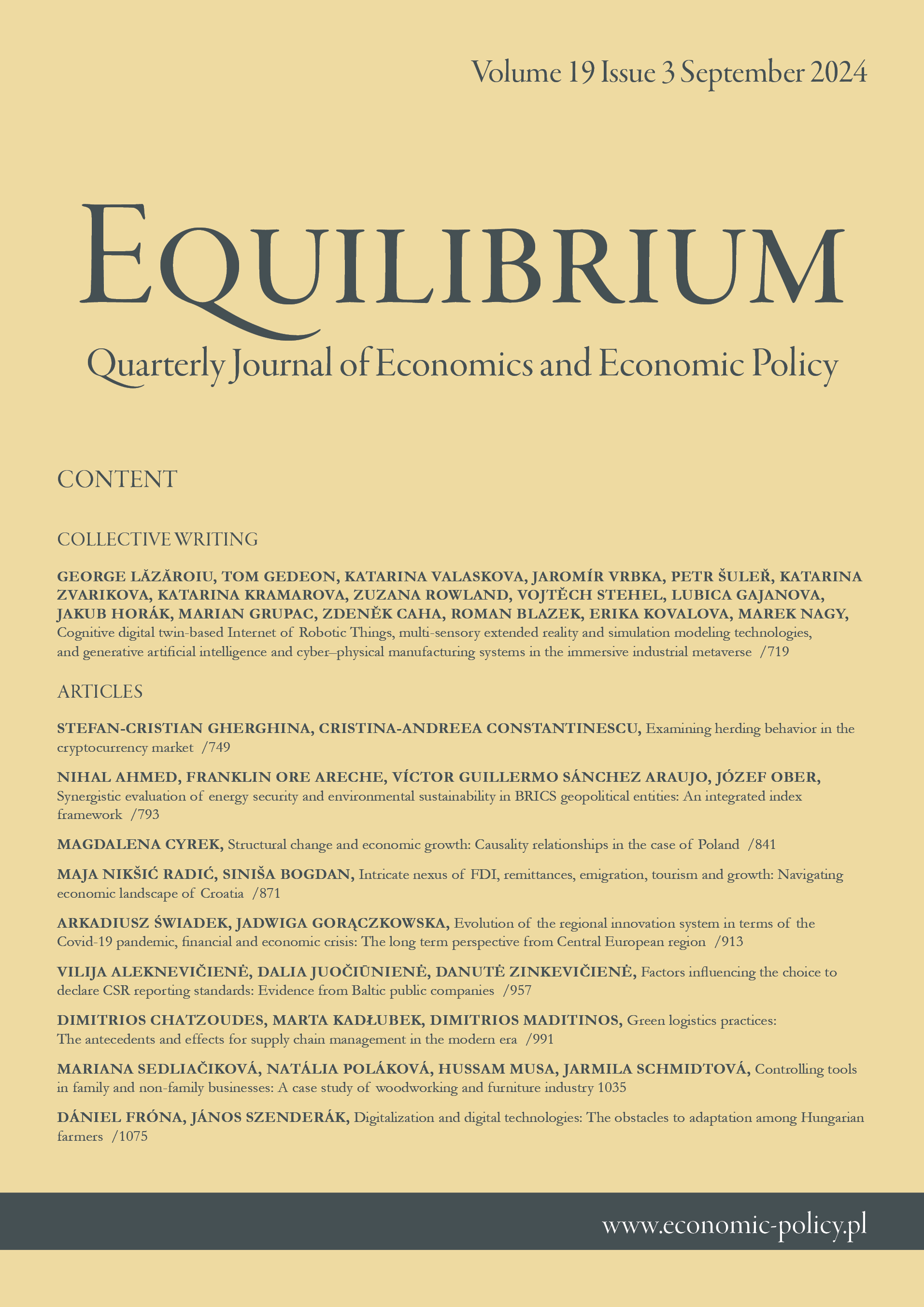Green logistics practices: The antecedents and effects for
supply chain management in the modern era
Green logistics practices: The antecedents and effects for
supply chain management in the modern era
Author(s): Dimitrios Chatzoudes, Marta Kadłubek, Dimitrios MaditinosSubject(s): Business Economy / Management, Energy and Environmental Studies, Transport / Logistics
Published by: Instytut Badań Gospodarczych
Keywords: supply chain management; green supply chain; environmental regulatory pressure; gov- ernment support; social reputation;
Summary/Abstract: Research background: Green logistics has become a focal point of interest for researchers andpractitioners across diverse sectors, including operations, logistics, and supply chain man-agement, over the past two decades. As global sustainability pressures intensify, the signifi-cance of green logistics continues to rise, driving a surge in empirical studies aimed at uncov-ering its far-reaching organizational impacts. Purpose of the article: This empirical study seeks to bridge a gap in the literature by consoli-dating key organizational elements that have not been collectively explored. At the core of thisresearch is an original conceptual framework, meticulously developed and validated througha comprehensive empirical survey. The framework captures nine distinct factors, grouped intothree critical dimensions: (a) drivers of green logistics practices, (b) the implementation ofgreen logistics practices, and (c) firm performance as measured by the outcomes of thesepractices. Notably, four factors — customer pressure, economic pressure, environmentalregulatory pressure, and government support — act as independent variables, while greenlogistics practices serve as both an independent and dependent factor. The dependent varia-bles span four key aspects of firm performance: operational performance, financial perfor-mance, market performance, and social reputation. More explicitly, the aim of this study is toexplore the key drivers and outcomes of green logistics practices, focusing on how factors likeregulatory pressures and customer demands influence their adoption, and how these practicesimpact different measures of firm performance.Methods: The conceptual framework introduced in this study, organized across three dimen-sions, represents a novel approach that has been scarcely explored in the existing literature. Toevaluate this framework, a newly developed, structured questionnaire was distributed toa carefully selected sample of Greek manufacturing companies. Respondents, including sup-ply chain managers, operations managers, and chief executive officers, were chosen for theirspecialized knowledge and strategic insights. The empirical data were rigorously analysedusing Structural Equation Modeling (SEM), a robust and well-established multivariate tech-nique. This study is grounded in primary data, it is explanatory in nature as it examinescause-and-effect relationships, it is deductive as it tests (eight) research hypotheses, and quan-titative through its statistical analysis of data gathered via a structured research instrument.Findings & value added: This study contributes significant empirical insights into the imple-mentation and impact of green logistics practices within supply chain management. Unlikeprevious studies, it consolidates critical organizational elements into a comprehensive frame-work that reveals the influence of regulatory, economic, and customer pressures on greenlogistics adoption. The empirical results demonstrate that environmental regulatory pressureis the strongest driver of green logistics, underscoring the importance of regulatory compli-ance in shaping sustainable practices. This finding is particularly relevant, as stricter environ-mental regulations are expected in the coming years, making it timely and impactful for bothacademics and practitioners. The research also highlights the tangible benefits of green logis-tics practices on operational, financial, and market performance, as well as social reputation.This multi-dimensional approach offers more depth into the current body of research, indicat-ing how green logistics practices can align with broader sustainability goals, while also en-hancing business competitiveness. The value added of this study lies in the integration ofthree sets of factors, proposing a framework that can be used by future empirical research andbusiness executives in the future. Finally, this empirical research offers practical guidance forstate policymakers that aim to promote the adoption of green logistics and maximise theirpositive impact for business and society. Its findings suggest that enhancing the regulatoryframework and, at the same time, offering better access to government support can reallyenhance the adoption of green logistics
Journal: Equilibrium. Quarterly Journal of Economics and Economic Policy
- Issue Year: 19/2024
- Issue No: 3
- Page Range: 991-1034
- Page Count: 44
- Language: English

